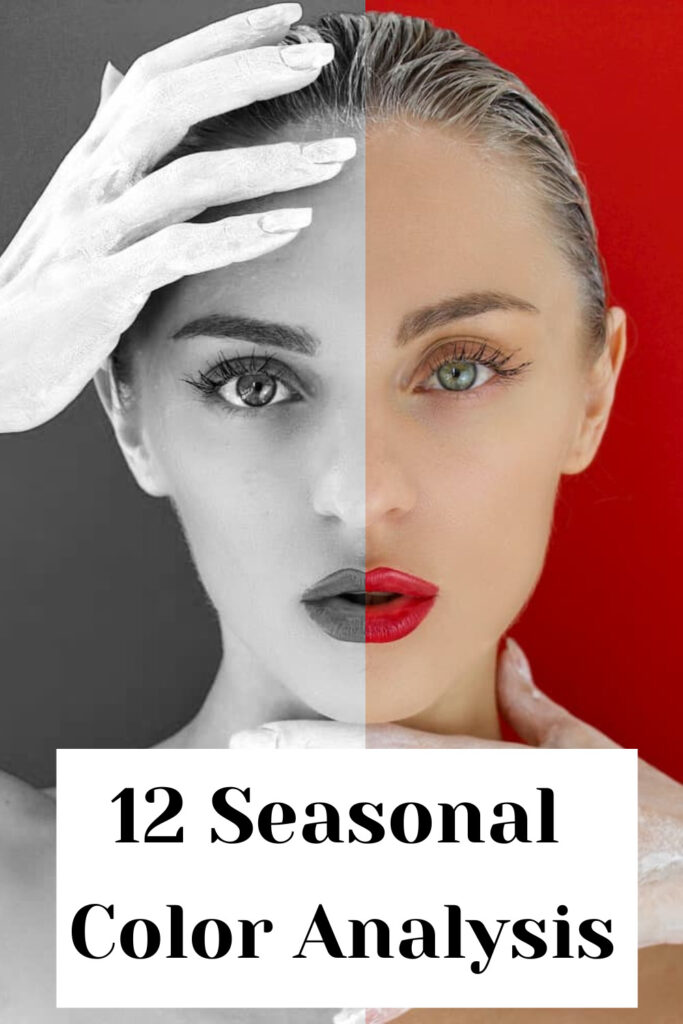Wondering what Seasonal Color Analysis is and what season you are?
This article has all the secrets revealed!
We all subconsciously avoid specific colors while purchasing clothes. No? Just me?
Well, have you ever bought a color that didn’t compliment your overall features and made you look dull, or do you have a plethora of shades in your wardrobe that you never wear?
Do you simply choose to wear ‘black‘ all the time because you don’t know what colors best suit you?
I mean, we cannot spend hundreds and thousands of dollars on purchasing all the colors in the world just to find what best suits us.
A few years back, when I was a painter, I decided that the same color analysis theory should transfer to my everyday life, especially in my wardrobe.
Before twelve seasons color analysis got to me, I already knew the Art color theory by heart.
After that, I discovered there’s a theory used to determine your season (Winter, Summer, Spring, Autumn), and it can be assigned to you as a color palette depending on that season.
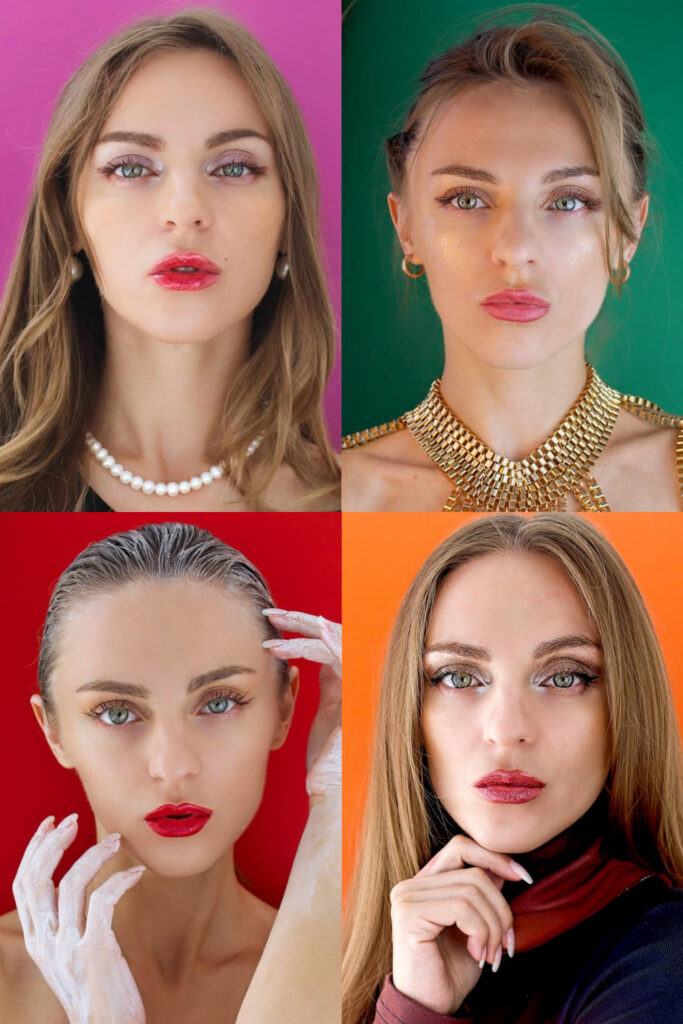
However, a traditional twelve-seasonal color analysis proved to be very useful, but at the same time, not all people are able to fit into the specific category.
There I understood that it is missing the key points from the Art Color Theory since it is all interconnected.
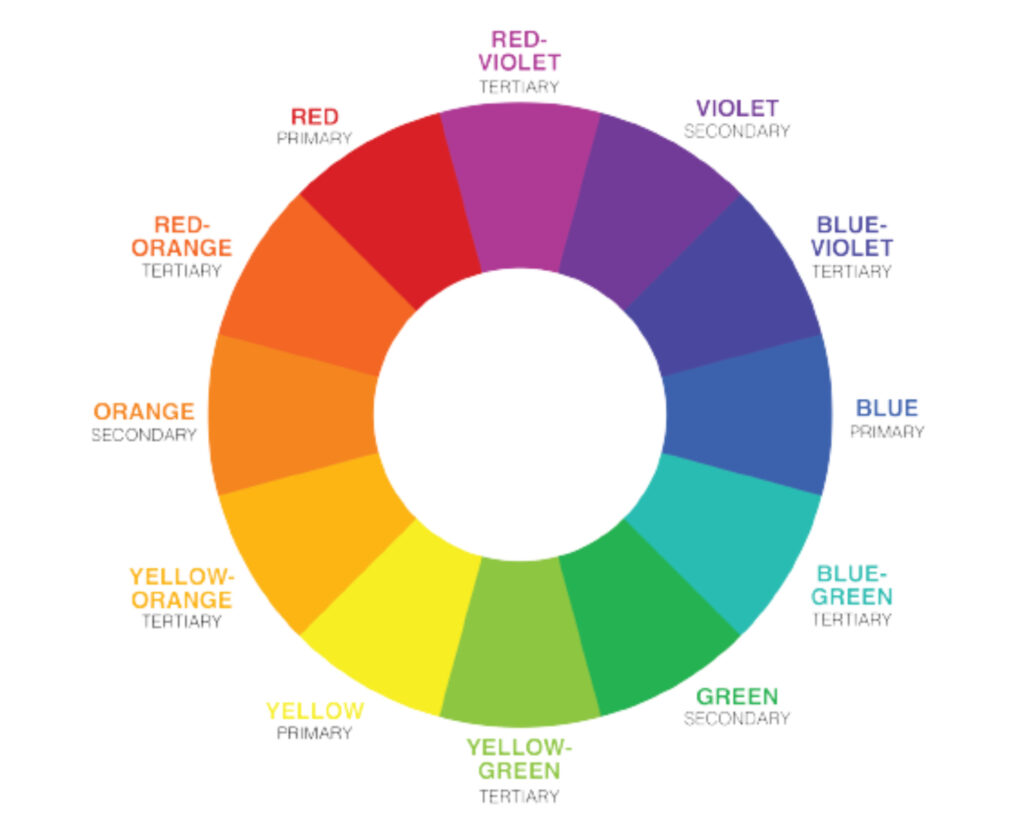
All tertiary colors would mean they are the ‘In Transition’ types on the seasonal color palette.
Where am I going with this?
Here on this chart, you can clearly see all the Primary colors: Yellow, Red and Blue.
After that are, all the Secondary and Tertiary colors indicated right in the same spectrum.
Even though the theory advocates that all blue color combinations are cold by default and all Green as well, I argue with that because we can clearly see the undertones of those shades (indicated on the chart).
The same goes for all Tertiary colors – they cannot be used to find your undertone because they are mixes of warm and cold colors at the same time, like ultramarine blue, for example.

For an ‘In Transition’ type, I like to use color harmonization as Monochromatic, Analogous, and Complementary looks for wardrobe.

Life would just be too easy if we had only 12 seasonal color palettes and 13 Kibbe body types.
Probably, we would all look like similar robots, and luckily we don’t.
Why color analysis is important?
Every season has a wide range of colors. It’s said that your seasonal color brings the best out of your features (skin color, hair, and eyes), and I cannot agree more.
You would know what colors to try and what to ban permanently from your life, just like I banned turquoise from mine.
- Seasonal color analysis is perfect for individuals who don’t always confide in ‘trends.’
- For individuals who don’t want to waste money on clothes every month, especially those they wouldn’t wear.
- For personalities who don’t want clothes to sit in their closet accumulating dust
- For people who want to try different colors than black. Been there, done that.
While seasonal color analysis has a few limitations, it’s still a contributing theory while generating a color palette that’s unique for you!
This article will help you to determine what season you are in.
The inspiration behind the seasonal color analysis
Back in the 19th century, impressionist painters accurately depicted the color palette (hue, tints, tones, shades) for each season.
They had to paint the true harmonious nature of every season and what colors best reflected their true essence and aura.
With every passing season, you’d witness a wide array of natural color palettes and their contrast—
- Spring’s tinted vibrancy
- Summer’s cool sunsets, colored in the shades of blue.
- Autumn’s deep, earthy tones.
- Winter’s icy blues.
Every season transitions into a new season gradually and elegantly— sometimes, we are too accustomed to notice.
However, those smooth transitions allow individuals to enhance their personal color palette between two seasons.
It wasn’t until the 1980s that we actually correlated seasonal colors to fashion and clothing.
Carole Jackson’s famous book ‘Color Me Beautiful’ revolutionized what today is called ‘seasonal color analysis.’
She used two significant tests to determine an individual’s unique color palette with regard to their features (skin undertone, hair, and eyes):
- Temperature/Hue: Warm and cold undertones of your skin and overall features.
- Value: Lightness and darkness/deepness of your overall features.
Please note: These two properties of colors offered us four seasonal color palettes.
However, these four seasonal color palettes were very limiting for multiple individuals. That’s when a third chromatic property of colors entered the chart;
- Chroma: Chroma gave birth to the 12 seasonal color palettes. We’ll discuss this soon enough.

What is In Transition Type?
Here, I introduce four more seasonal options called ‘In Transition’ Type – a totally separate type that sits between all transitional types.
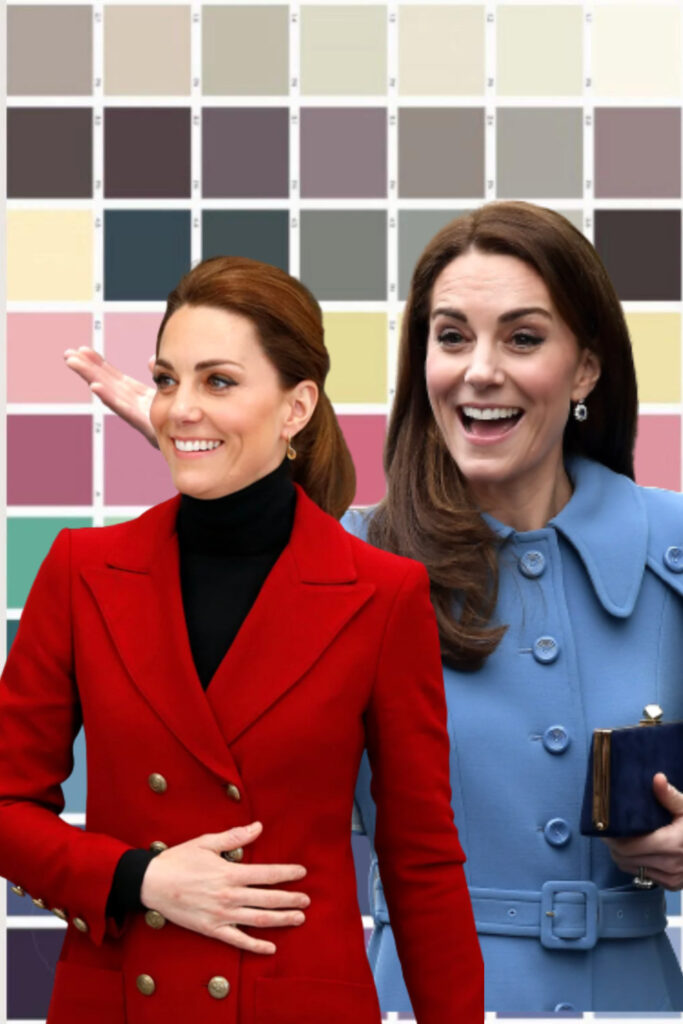
We can refer to Kate Middleton as an In Transition type.
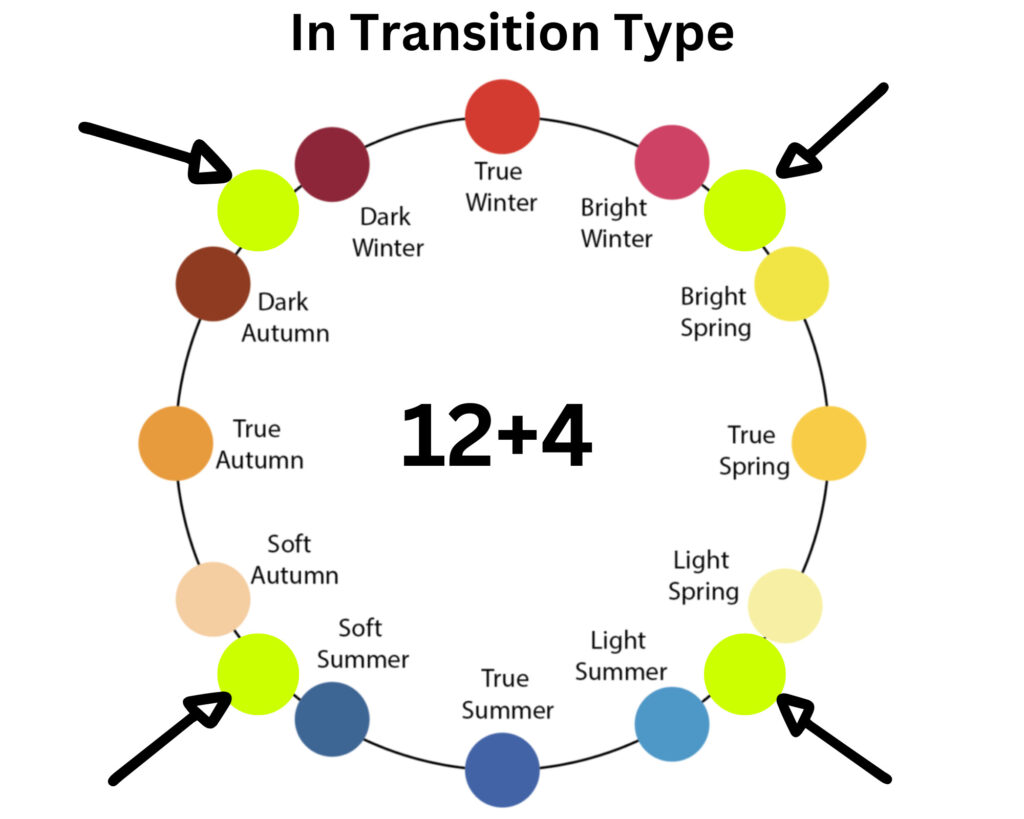
The dots marked with the neon green on the chart are all “In Transition’ type.
Where did I get that from, and why do we need it?

Here, we need to come back to the basics of where the color actually began. As I mentioned above, there are Primary, Secondary, and Tertiary colors.
Primary colors are the basics – they are not extracted by mixing other shades – they serve as a point 0 where you are going to start.
Red, Blue, and Yellow are considered Primary Colors. You will mix them in order to get the Secondary colors, such as Orange.
So you would mix Red (Primary) + Yellow (Primary): Orange (Secondary).
The same way you would mix Red (Primary) + Blue (Primary): Purple (Secondary).

And there are also Tertiary colors that are basically a mix of Primary and Secondary colors.
For example, Magenta is a combination of red with purple.
P.S.: Magenta is not considered a color – it’s a hue.

How do we determine Magenta in this case?
Magenta has been a mix of Red (Primary) and Purple (Secondary).
Thus, Purple has been created by adding Red (Primary) and Blue (Primary).
In conclusion, we have the admixture of double red, which is going to serve as a warm primary undertone, and blue in a much lesser quantity as a tint.
Even though this Tertiary color is going to be used a lot by Transitional types or as Complementary or Analogous Colors.
For that reason, you cannot use Magenta to determine your undertone just because it is a tertiary color that can be used in both warm and cold seasons.
The ‘In Transition’ types will jump from one color palette to another one just by virtue of being “in transition.”
The skin undergone in both seasons will be very similar or even the same, and it will be warm and cold at the same time.
And the contrast will jump from low to medium at most.
This is what we call a “neutral” skin tone that will lean towards warm if Autumn and cold if Summer, and sometimes being right in the middle if you tend to jump quite often.
This is especially helpful for people who cannot find their seasonal type, and both gold and silver shades fit them well.
If you are an “in transition” type, you will even use both cold and warm colors for your wardrobe and not only jewellery.
Not only that, but this type can also wear color conglomeration of cold + warm at the same time, as stated above.
How To Determine Skin Undertone Fast
Before we jump into Seasonal Color Analysis further, let’s determine the skin undertone.
Like I said previously on this blog, the easiest way to figure your undertone out is the jewellery test. The golden and silver shade near your face is going to be a major help for you.
If you are leaning towards silver and you actually look better with it – you have a cool undertone, if vice versa – a warm one.
If both fit you perfectly well – most likely you have a natural undertone and take into consideration that you also might be an ‘In Transition’ type.
Why Doesn’t The Vein Test Work For Undertone Determination?
Multiple tests have already been done and tested all around the world, showing that the color of your veins is not going to be a reliable source of determination.
I have found an article on Insider where an editor took a test like that, which showed that the color of her veins (blue) should have determined that her undertone was supposed to be cool.
However, after a thorough analysis, they came up with a warm undertone, considering her eye and hair colors.
If you are able to see any yellow pigmentation in your irises – you are running a risk of being warm-toned.
Hair is not always easy because we tend to change the tonality throughout life.
There is a risk that your current hair color doesn’t correspond to your actual color type.
Why are Orange and Magenta Colors not for undertone revelation?
As mentioned previously, secondary and tertiary colors are mixes of warm and cold colors.
Orange and Magents can have different tonalities and basically Chroma and Value.
You will not be able to identify your true undertone just by trying Magenta near the face.
If you want colors, try Gray to see if your appearance looks better with it.
Does it make you look ‘lost’? Basically, this test relies on the example of Bella Hadid (Soft Summer).
She flourishes in gray color, which makes her look so much better than the other bright colors.
For now, let’s focus on understanding your hue and value to determine which of the four seasons best describes you!
It’s alright if you don’t fit in either of the four seasons— a 12-season color analysis awaits you ahead in the article.
Hue: Warm or cold
Generally, hue is the prominent color family; other colors are created by adding different tints, shades, or tones (white, black, and gray) to the main hue.
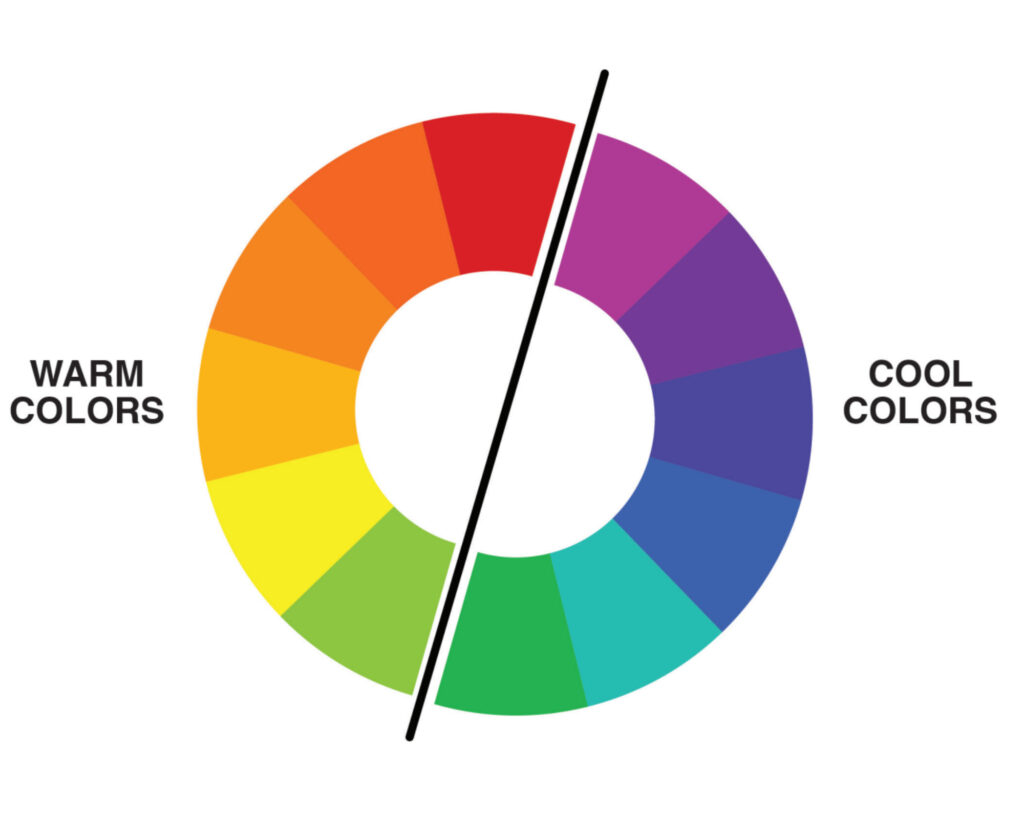
For example, green is the hue (the prominent color family). However, olive is a shade of green that’s mixed with black.
Although not a universal fact, it’s still believed that some colors are naturally warm hues while others are inherently cool.
Orange, yellow, and red are considered warm, while purple and blue are cooler colors (we will discuss that later).

Please note: Every color can have a warmer or cooler undertone.
For instance, take the color blue— Cerulean blue is cool, but we also have ultramarine blue, which is warm.
Warm undertones of your face
It can be a little confusing to determine your hue initially.
Warm-hued faces often have the undertones of peach, golden, and yellow in their skin, hair, and eyes.
If you are warm-hued, you will lie somewhere between these three colors.
Warm-hued faces have less contrast in their appearance because their hair and skin color blend and synchronize with each other harmoniously.
Cool undertones of your face
Cool-hued faces have pinkish or bluish undertones in their skin, i.e., you wouldn’t find a trace of gold, peach, or yellow in their overall appearance, including the hair.
Similarly, they often have darker, ashier, and cooler hair without hints of light brown, blonde, or golden.
Value— Deep or light
The value determines how dark or light the color is using black and white to evaluate the image.
Your overall value is easier to determine. Value majorly focuses on the hair color of an individual.
However, you can also consider skin tone and eyes as well.

- The darker the hair, the deeper your value.
- The lighter the hair, the lighter your value.
The four seasonal color palettes
Summer and Winter are naturally considered to have cool undertones.
On the other hand, Spring and Autumn have warm undertones.
True Summer color palette
Temperature: Now, you might wonder, summer is a cooler undertone; is it correct?
Yes, it is! (P.S.: Here we are going to play associations).
The extreme sun washes out most of the colors during summer.

Additionally, the sunset and sunrise offer us a wide range of colors, such as— purple, pink, blue, lavender, and a combination of all these hues/tints.
You will notice that these are the colors of cool undertones.
Value: These colors are strikingly on the lighter side. You wouldn’t notice a darker shade in the summer season. It’s always lighter tints of blue, pink, purple, etc.
So, summer has light value.
Cool+Light= Summer

True Winter color palette
Temperature: With the lack of sun, winter paints the earth in shades of blue. Without a doubt, the winter season offers us cooler undertones.

Value: Winter is naturally darker than other seasons. So, its value is also dark.

Cool+deep=Winter
True Spring colors palette
The beginning of spring presents us with a wide range of blossoms— a month of natural rebirth. You will encounter tints of unique flowers and harvests.

Spring naturally offers warmer undertones— now imagine a landscape full of thousands of tulips, daffodils, pansies, camellia, primrose, freesia, etc.
Bright yellow, orange, and red are the dominating colors of this month.
Value: Spring is brighter, with its color range on the warmer side.
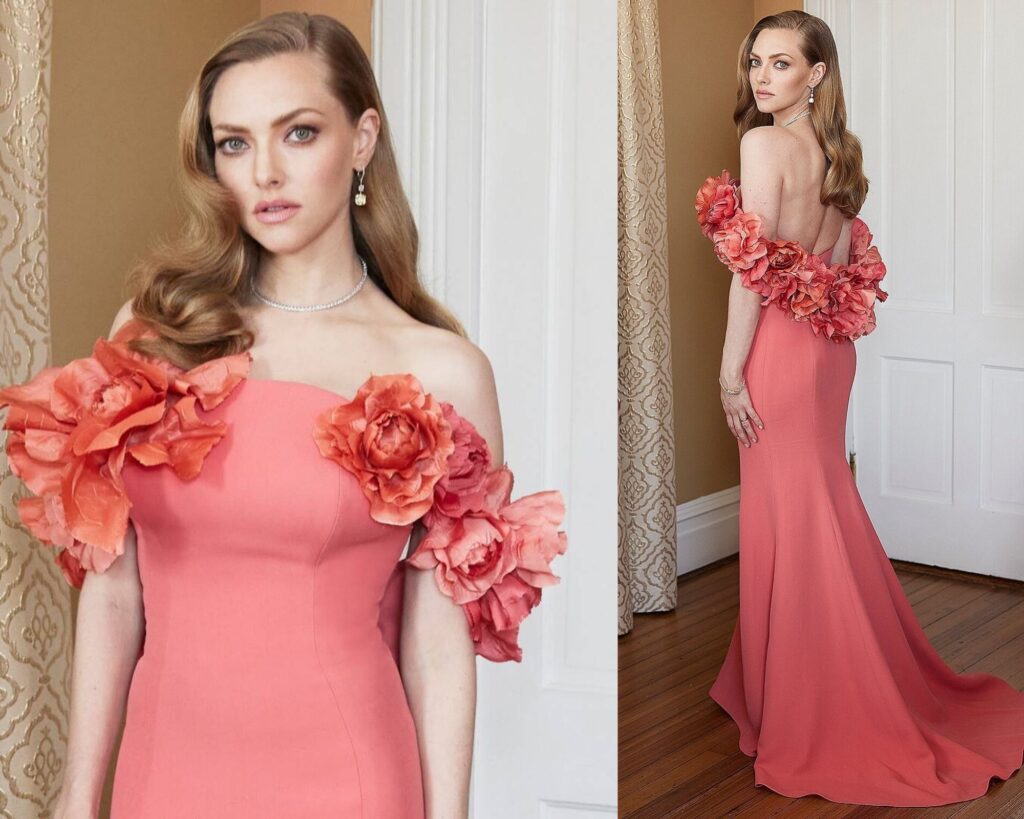
Warm+light=Spring
True Autumn color palette
With the beginning of the fall season, you will be introduced to the earthy tones of mother nature— The fall season brings us the decaying of the bloom— leaves and flowers will turn auburn and create a striking contrast of orange-brown landscape.

Autumn also has warmer undertones; focus on the colors orange, auburn, and brown— all having natural hues of yellow.
Value: Autumn colors have a darker value— consider the colors auburn and brown.

Warm+deep=Autumn.
Which cool season are you— summer or winter?
We discussed how individuals with cool undertones fall between summer and winter.
However, which one are you?
1. Dark/Deep winter color palette— Cool+Deep=Winter.

If your undertones are cool and you are on the deeper value of colors, such as,
- Darker hair colors: They can be black or chocolate brown hair color with an ashy appearance. Your cooler undertone, combined with your deep values, falls under winter.
- Your eyes are deeper in color— dark blue, brown, dark green, and black.
- You have a striking contrast between your features— they all stand out independently. For instance, pale skin with dark black hair/eyes is a classic example of cool winter.
2. Light summer color palette— Cool+Light=Summer

Alternatively, do you have lighter values in your appearance? If so, you are in the summer season with cooler undertones.
- Hair: Lighter shades of brown, blonde, and golden
- Eyes: lighter shades of blue, brown, hazel, and green
- Skin: Your skin will have a moderate contrast with other features. You have cooler undertones (pinkish or bluish skin undertone) but lighter hair composition.
Which warm undertone season are you— Spring or Autumn?
Spring and Autumn both have warm undertones.
However, which one are you? Well, this depends on the value of your appearance.
Is it dark/deep (darker hair) or light (lighter hair)?
3. Dark/deep autumn color palette— Warm+Dark=Autumn

You belong to the Autumn color palette if you have a deep/dark value. What’s the deeper value of the autumn season?
- Deeper hair: Autumn hair often includes mahogany, auburn, dark brown, and dark golden hair. Deeper hair doesn’t always have to be a darker color; however, its density should be highly pigmented.
For instance, natural redheads feel like the hallmark of autumn.
However, their pigmentation is light, so they fall under the summer season. For autumn, you need a deeper hair color, such as mahogany.
- Darker eyes: Dark brown, blue, green, hazel
- Skin tone: With warmer undertones and earthly shades, the Autumn season creates a beautiful yet deep blend for your features.
4. Light spring color palette— Warm+light=Spring

Alternatively, you fall under the spring season if you are warm-hued but have a lighter value.
What’s a lighter value? You will mostly have warmer and lighter hair color.
- Hair color: light blonde, strawberry blonde hair color, light golden, light brown hair color.
- Eyes: Lighter shades of blue, green, hazel, and brown.
- Skin: The warmness of your undertone and lighter hair color will create a peaceful blend of your features.
That’s why these two variables (warm seasons and cool seasons) will leave us with four seasonal palettes:
- Cool and deep winter
- Cool and light summer
- Warm and deep autumn
- Warm and light spring.
12 seasons color analysis— What color season are you?
- Determine your undertones,
- Choose the season depending on your undertone and value (discussed above).
It’s very much possible that you don’t fall under either of the four seasons.
For instance, suppose you are cool and light, but the summer colors are too muted/dull for you.
Spring colors are bright and beautifully saturated but they have warmer undertones.
You don’t want to wear muted clothes, but you have cool undertones. So, how do you decide on your color palette?
This is where chroma completes the 12 seasonal color palettes. It adds brightness or softness to your color palette.
Chroma— Bright/Clear or Dull/Muted
Chroma is the third essential dimension that predicts your seasonal color accurately.
It adds clear or muted saturation to your seasonal color palette, i.e., how defined your undertones and values are.
For instance, charcoal black is clear but becomes muted when you add gray.
In simpler words, the softness or brightness of colors depends on the composition of gray present inside that specific color.
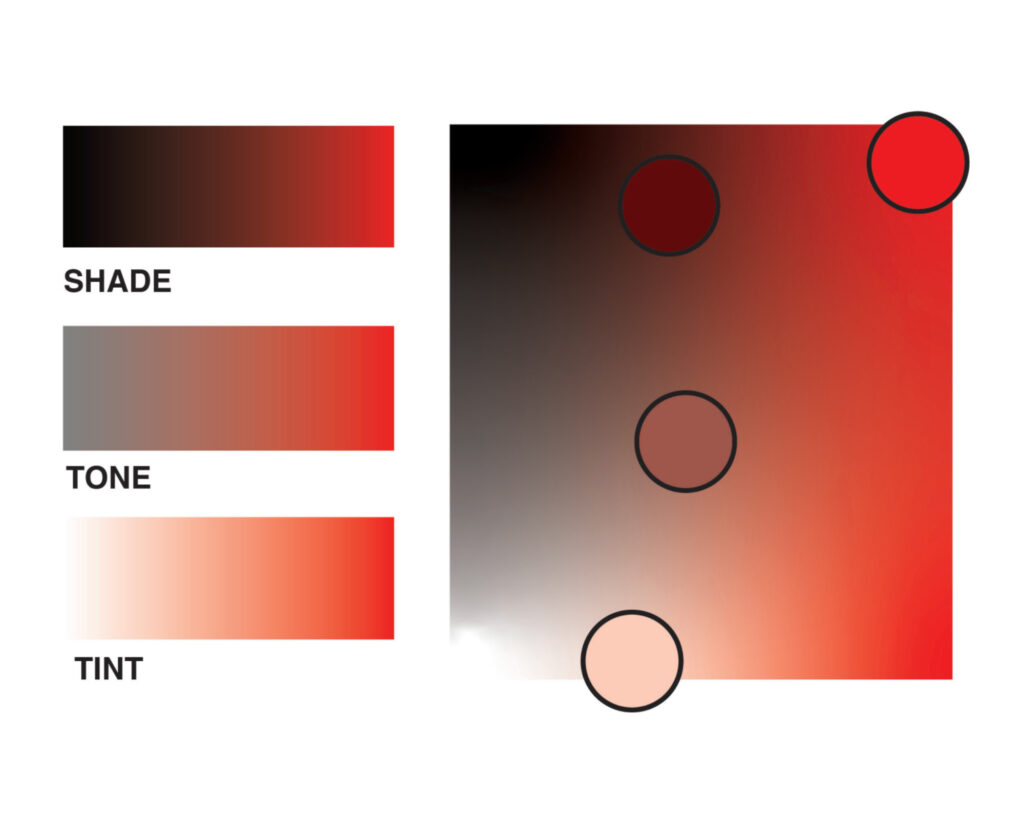
- High chroma: It has no presence of the color gray. Hence, they are clear and bright—examples: Proper hues: Red, orange, and green.
- Low chroma: You will find gray in its composition, and that’s why they become muted or soft—examples: Old rose, Persian orange, celadon.
Determining your chroma: How clear or muted does your face look?
If it’s heavily pigmented in every essence of your appearance, you have high chroma.
However, you have low chroma if it’s desaturated and not highly pigmented.
Chroma in season: Winter and Spring are brighter and more saturated in their colors.
On the other hand, Summer and Autumn are muted and less saturated in their colors.
Now that chroma has been added to our color seasons; we can define the 12 seasonal palettes.
High chroma: Winter and Spring
Low chroma: Summer and Autumn.
Here’s the breakdown of all the 12 seasonal color palettes.
Usually, our undertone (hue) decides our primary seasonal color. Next to hue, our secondary parameters are value and chroma.
You don’t need to have all three dimensions to create your unique color palette. Meeting two dimensions will be enough to produce a unique color palette for yourself.
Winter’s three dimensions.
- Cool winter (Cool undertones): Cool+Bright (hue is primary here)
- Deep winter (Value): Deep+Cool (value is prominent here)
- Clear winter (Chroma): Bright+cool. (Chroma is the primary dimension here)
Winter doesn’t have muted colors in its palette. Its colors are often highly pigmented (deep value) and saturated (high chroma)
Summer: Three dimensions
- Cool summer (hue): Cool+soft/muted
- Light summer (value): light+cool
- Muted/soft summer: Soft+cool
Summer’s colors are often washed down because of the scorching sun, thus, softening all the colors.
Spring’s three dimensions
- Warm spring: Warm+bright
- Light spring: Light+warm
- Dark/deep spring: Dark+bright
Spring’s the season of blossoms; flowers take birth in their most-saturated form. Thus, spring is bright.
Autumn’s three dimensions
- Warm autumn: Warm+muted
- Dark/deep autumn: Deep+warm
- Soft autumn: soft/muted+warm
Autumn is the symbol of decaying. Flowers lose their natural saturation and close down towards darker and muddier colors. Hence, it’s soft/muted.
Characteristics of the 12 seasonal color palettes
Now that you know and understand all the 12 seasonal color palettes, here’s a brief description and characteristics of chromatic seasons with respect to your overall appearance:
- Clear/bright winter,
- Clear/bright spring,
- Soft/mute summer, and
- Soft/muted autumn.
Clear/bright winter color palette: Bright+cool
Every aspect of your appearance is highly saturated and nowhere soft or dull. Your features stand out against each other and create a contrasting effect.
- Hair: Black, dark-brown, black-brown, extreme white-golden blonde
- Eyes: The whites of the eye are clear and defined. The eye color is bright and saturated without any hint of gray.
Popular eye colors for the clear winter season are bright blue, hazel, bright amber, dark brown, black, emerald, etc.
Again, the eye color will stand out contrastingly against other features.
- Skin: Cool undertones and higher saturation in complexion without hints of muted colors.
Bright/Clear spring color palette: Bright+warm
- Hair: Shades of dark brown, blonde highlights on brown hair, auburn, pigmented ginger.
- Eyes: Brighter colors, such as blue, brown, topaz, and green.
Bright spring and bright winter would lie on the opposite ends of darkness. While bright winter embraces saturation in darker colors, spring flourishes the higher saturation in lighter colors.
Soft summer color palette, also called muted summer: Muted+Cool
- Skin: Muted coolness in the undertones; light pink is evident and prominent.
- Hair: Muted brown, Gray platinum, light brown hair with highlights.
- Eyes: Gray, brown, and hazel.
Soft summer and soft autumn can be difficult to differentiate. However, you can distinguish their muteness depending on the color involved.
Soft summer will have grayish pigments as their central element.
Soft autumn color palette/muted autumn: Muted+warm.
On the other hand, soft autumn will have significant use of walnut pigments in their complexion and overall appearance.
- Skin: warm undertones with walnut pigments.
- Hair: Dark brown, light brown with golden highlights, auburn, ginger.
